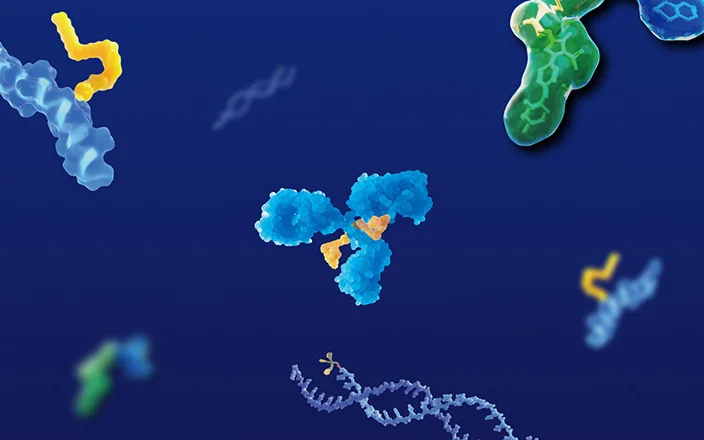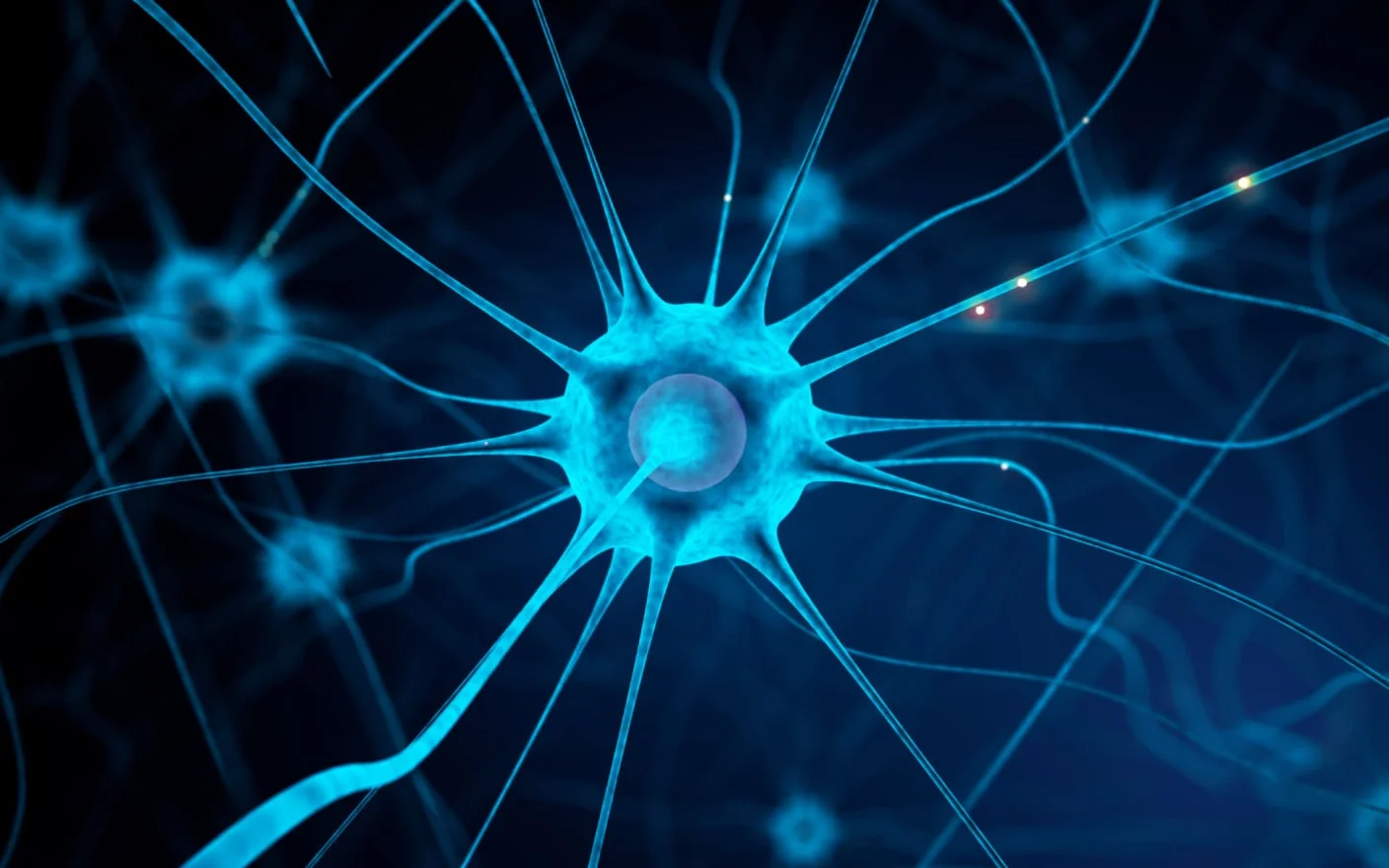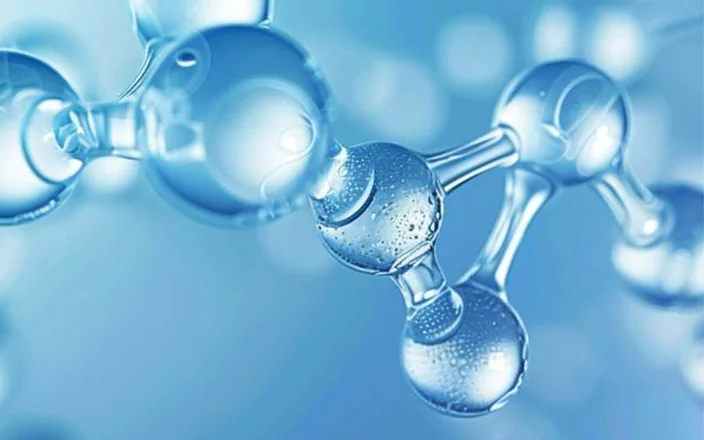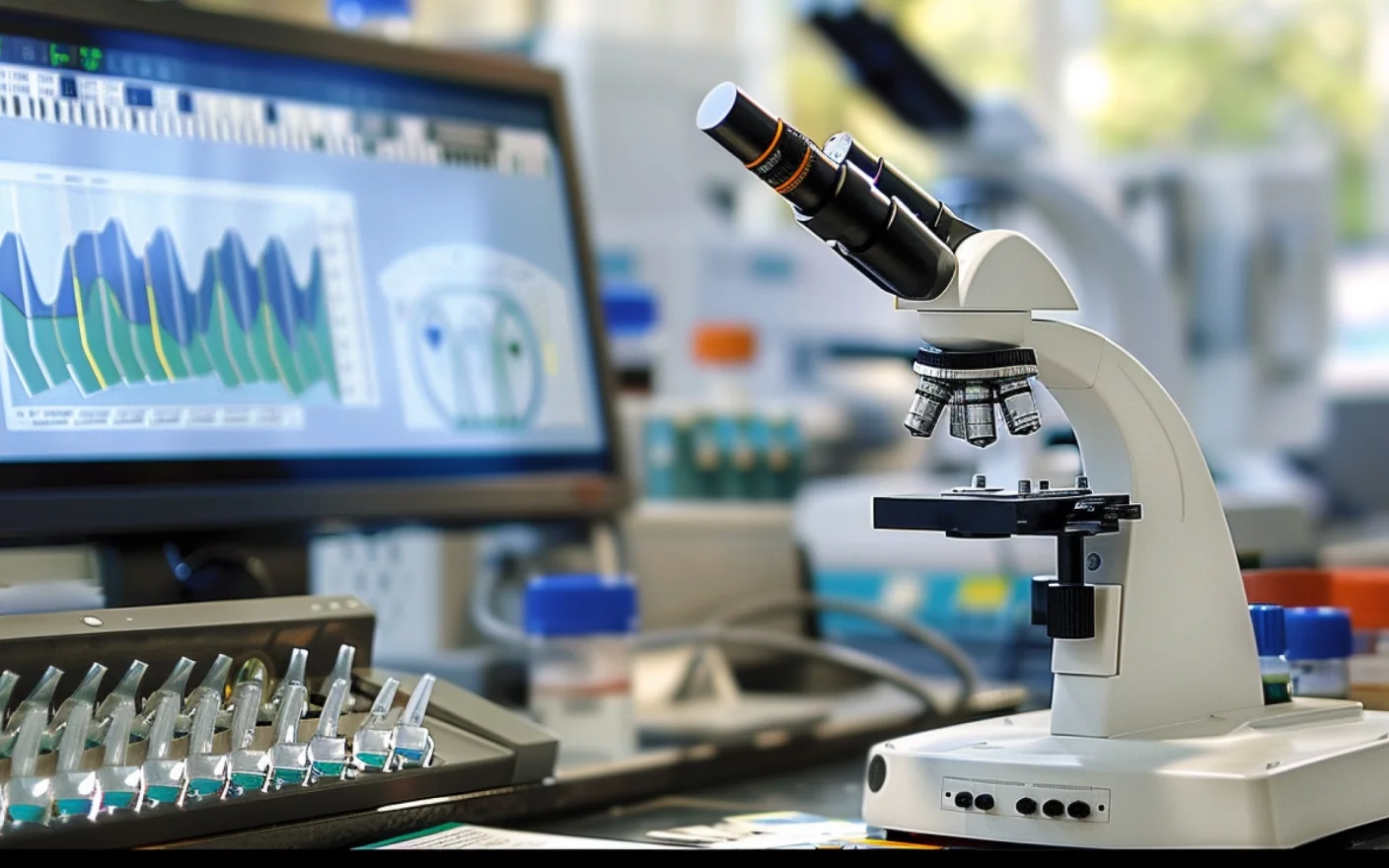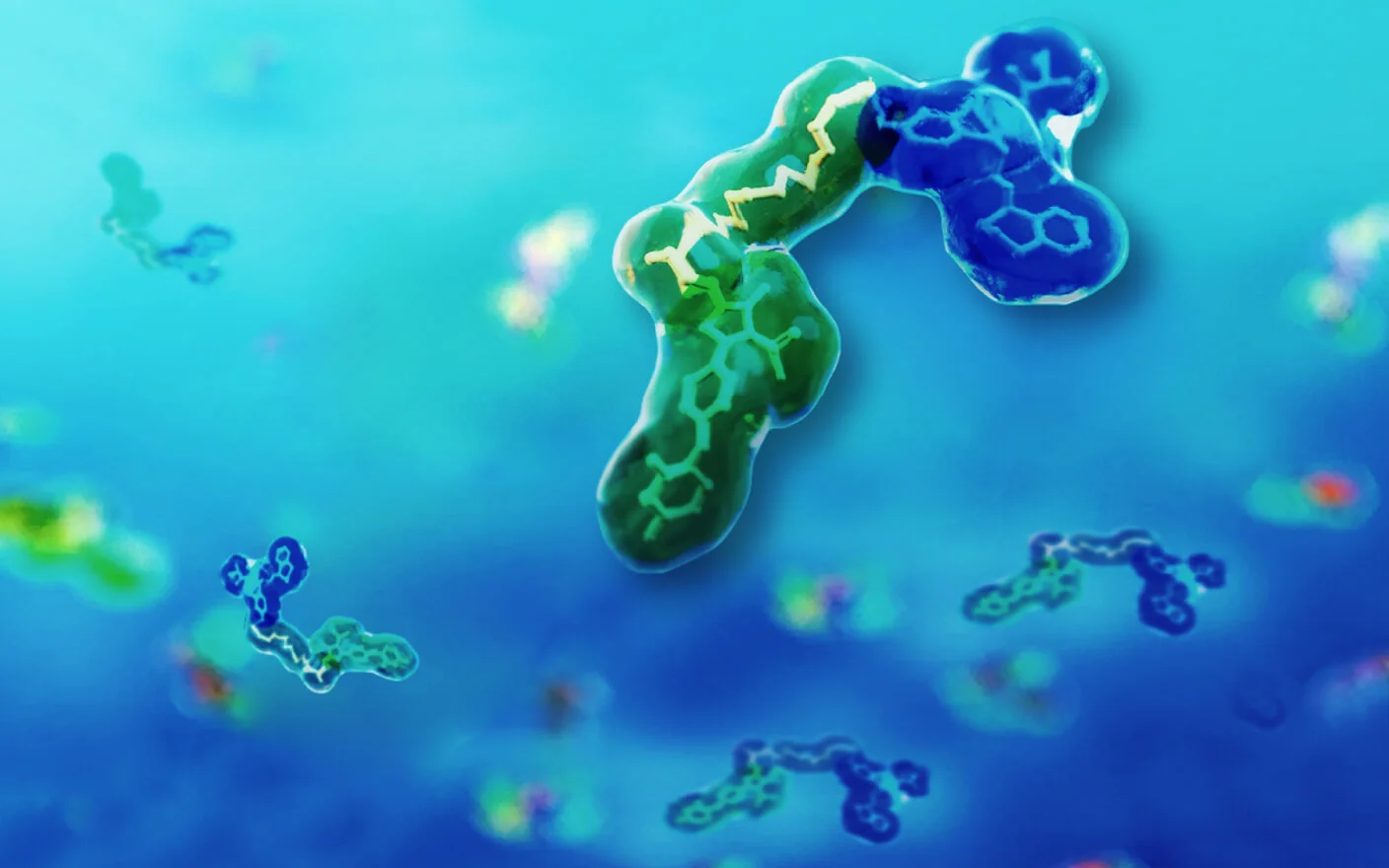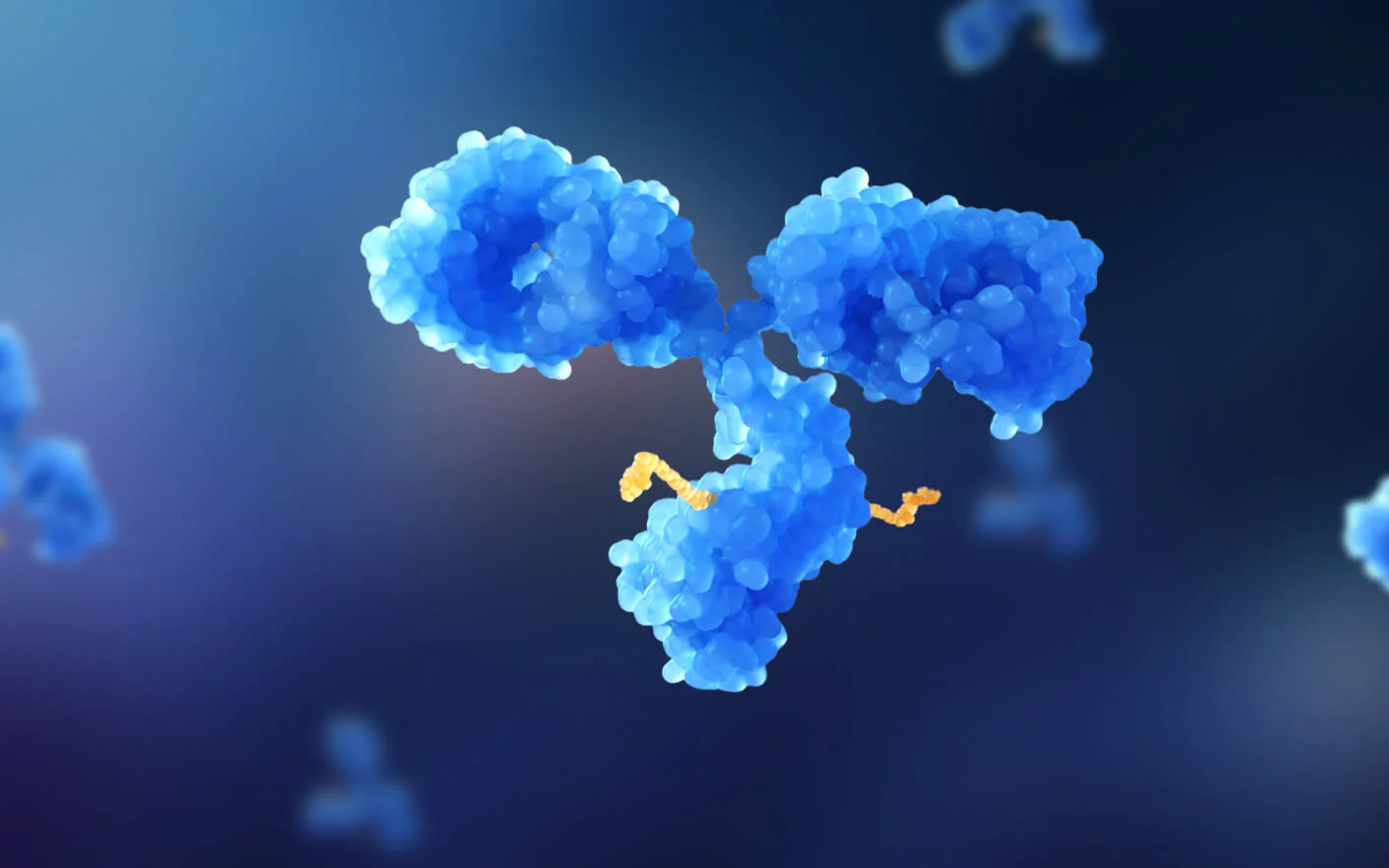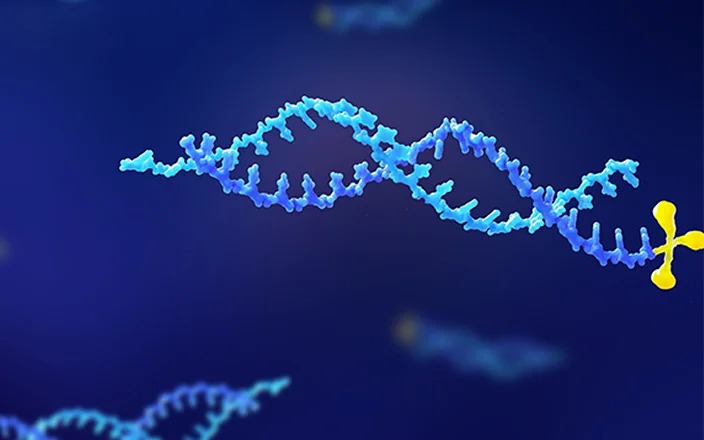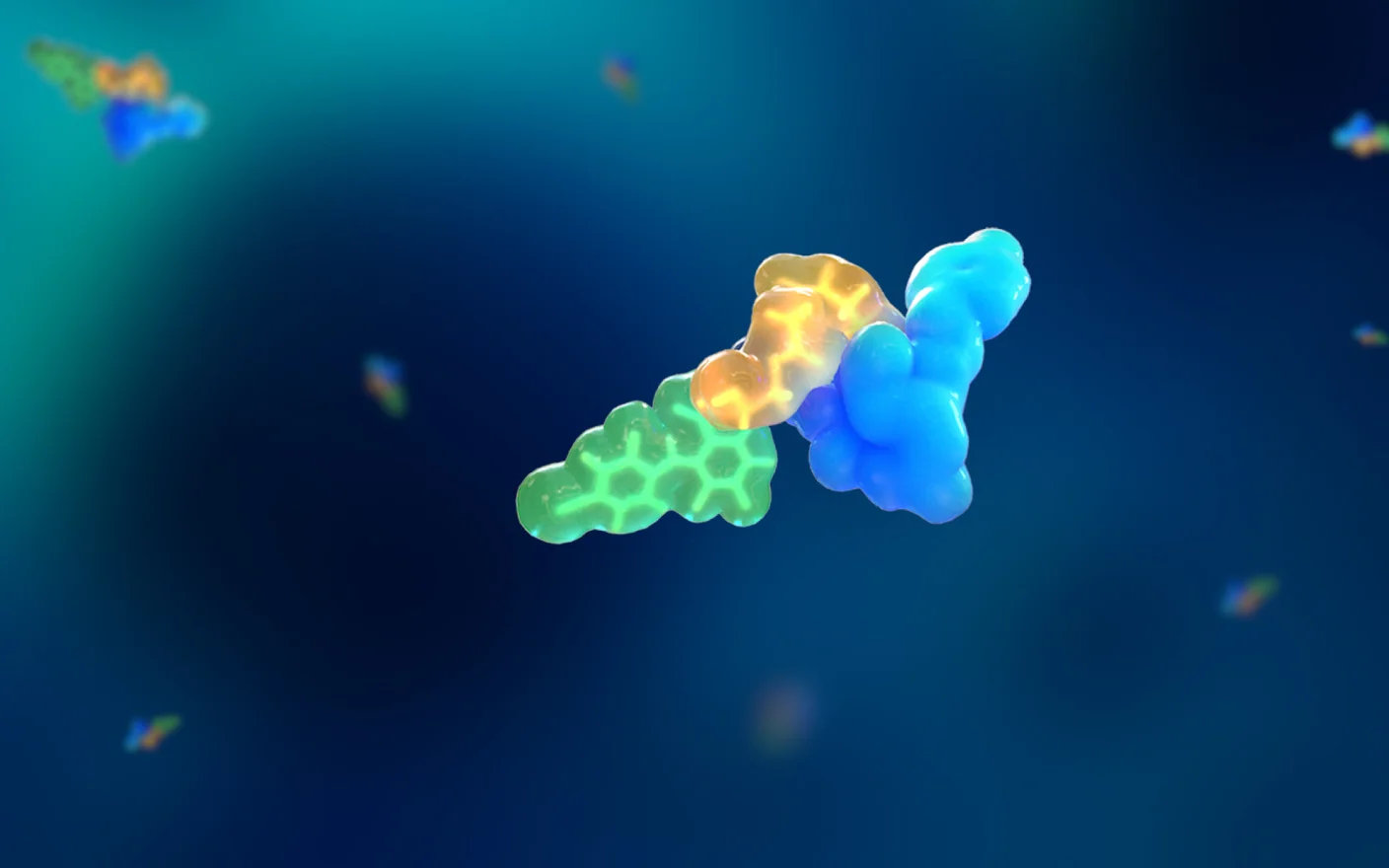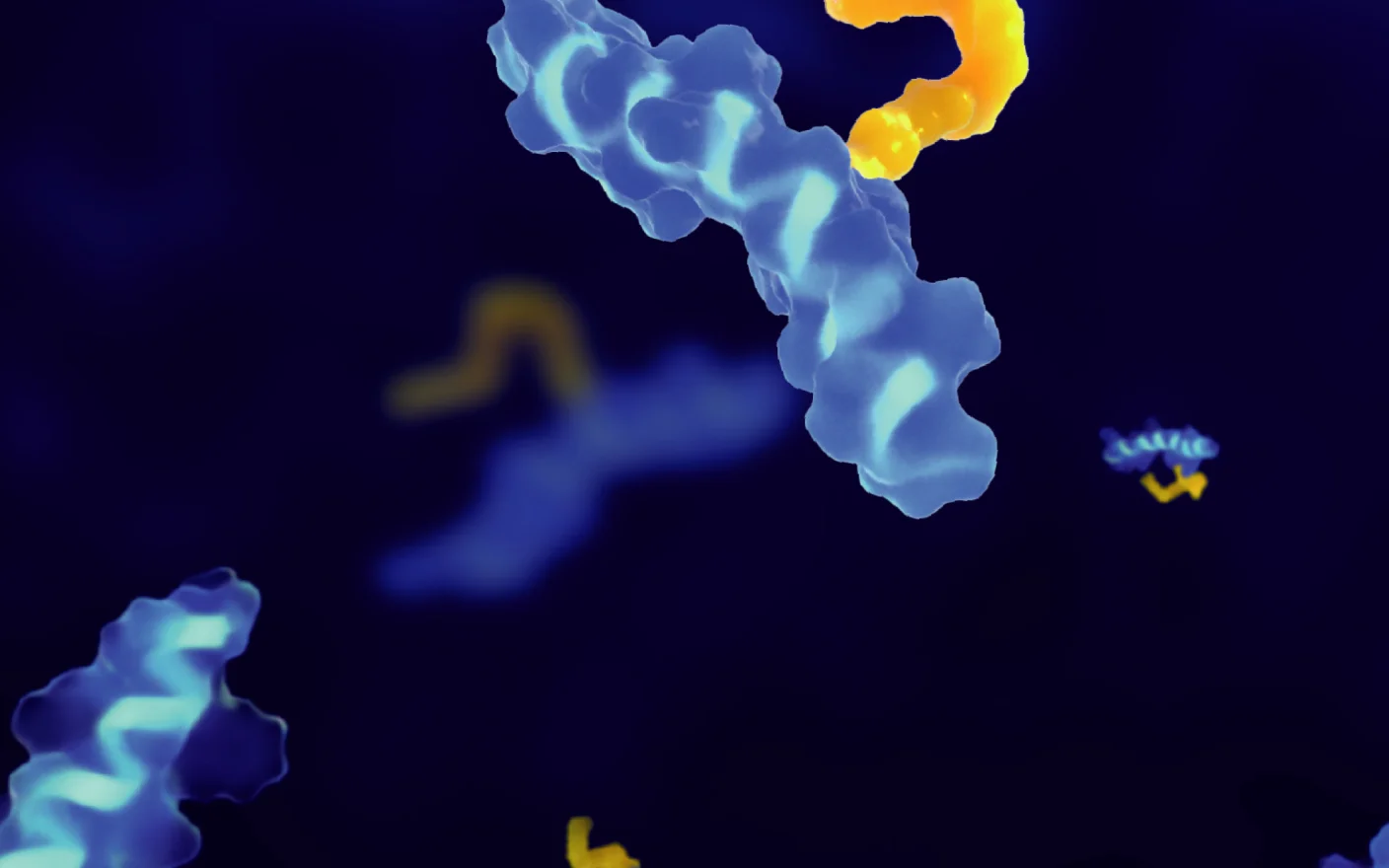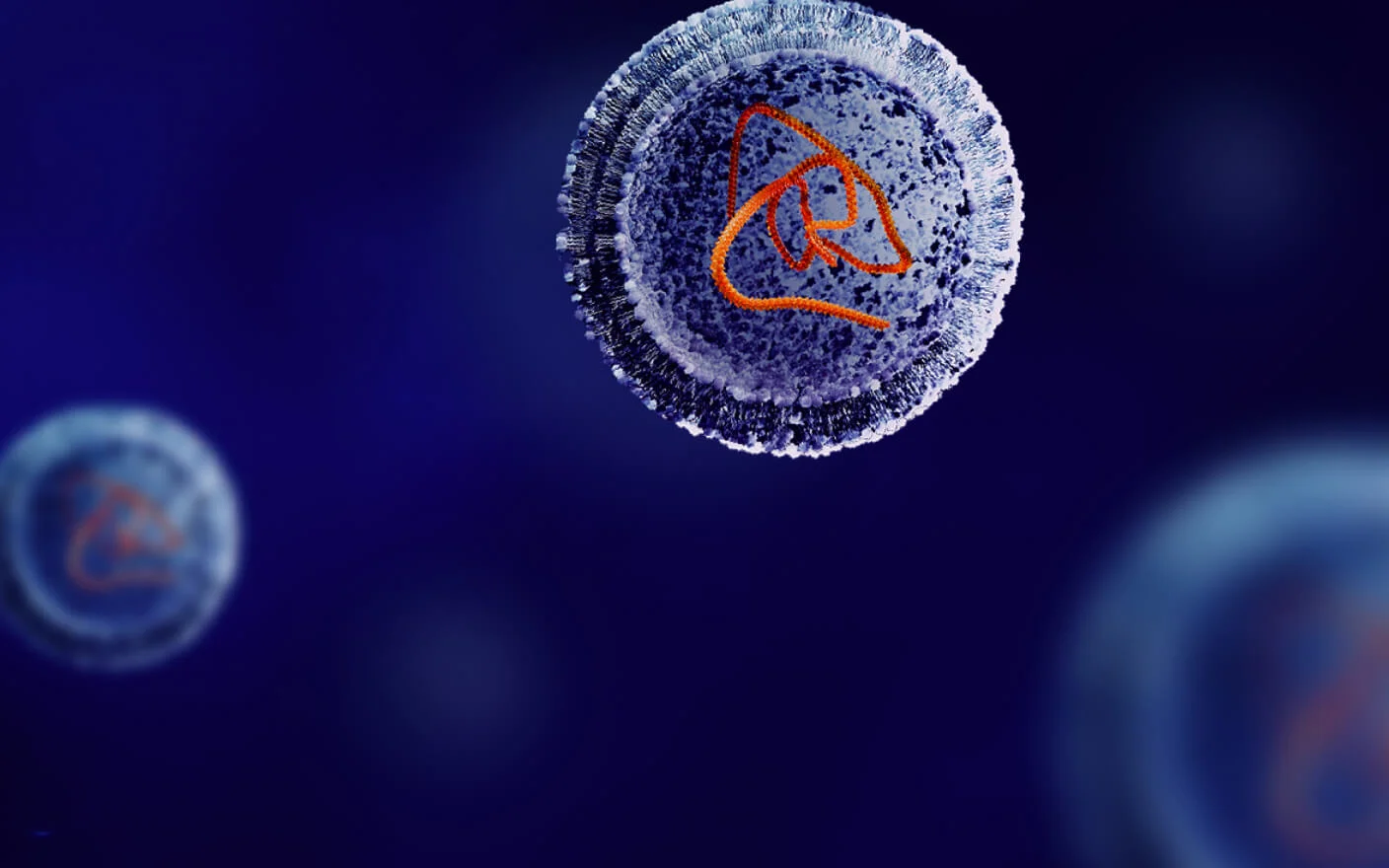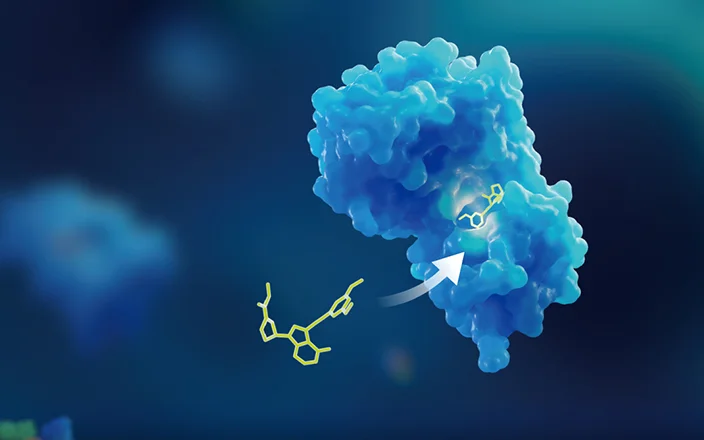As the global economy grows, obesity has emerged as a significant public health challenge. This chronic condition increases the risk of diabetes, cardiovascular disease, hypertension, and cancer. With their proven effectiveness and safety, GLP-1 receptor agonists (GLP-1 RAs) have become the leading weight-loss medications worldwide, prompting the pharmaceutical industry to ramp up research and development efforts in this area. Research indicates that GLP-1 receptors are widely distributed across various organs and tissues, and GLP-1 RAs exhibit multiple mechanisms for lowering blood sugar and promoting weight loss. They also show potential benefits for conditions such as Alzheimer’s disease and non-alcoholic steatohepatitis. This article mainly introduces the current R&D direction and optimization strategies of GLP-1, and illustrates its bioanalytical challenges and strategies for GLP-1 analogues.
R&D difficulties and optimization strategies of GLP-1 RAs
The short half-life of natural GLP-1 poses a challenge for drug development. There are multiple strategies aimed at extending the half-life of GLP-1 and enhancing its efficacy (as shown in Figure 1)[1]. Oral administration of peptides faces hurdles related to gastrointestinal stability, however the invasive dosing routes lead to higher costs and lower compliance [2]. In addition, the hypoglycemic effect, weight reduction, and positive impact on cardiovascular function have prompted the exploration of its exact mechanisms[2].

Figure 1. The half-life of each GLP-1 analogues and strategies to prolong and enhance its efficacy
Optimization of molecular structure
The strategy of acylation with fatty acid has been applied for semaglutide and tirpatide, allowing these drugs to bind to human serum albumin (HSA). High and stable levels of HSA in circulation act as a reservoir, prolonging the drug’s half-life. In addition, acylation with a fatty acid can also alter the distribution of drugs in the body and facilitate the development of oral formulations for peptide drugs[4].

Figure 2. HSA structural diagram and fatty acid binding sites (areas marked red and yellow)[4]
New drug administration methods
Semaglutide tablets are orally administered with the help of the osmotic enhancer Sodium N-(8-[2-hydroxybenzoyl] amino) caprylate (SNAC). The role of SNAC in the stomach is to raise the local pH in the stomach and promote cross-cell transport of drugs, and the effect is sufficiently reversible (Figure 3) [5].

Figure 3. Schematic diagram of semaglutide absorption in the stomach following oral administration [5]
Systemic regulation of GLP-1 RAs
Apart from its ability to act on the pancreas to enhance glucose-stimulated insulin secretion (GSIS) and to inhibit the secretion of glucagon, GLP-1 RA can reduce body weight by decreasing homeostatic food intake, and GLP-1RA further delaying gastric emptying. Compared to hypoglycemic drugs such as insulin, GLP-1RA has the advantage of systemic regulation and is more suitable for obese diabetic patients (Figure 4) [6]. Additionally, GLP-1-MK-801, a peptide conjugated with a small molecule (Figure 1), is conducive to obesity treatment through GLP-1RA-mediated cerebral NMDA receptor antagonism [3].

Figure 4. The drug combination of GLP-1 RA and insulin to utilize both their merits
(FBG: Fasting blood glucose; PBG: Postprandial blood glucose)
Bioanalytical challenges in the development of GLP-1 RAs
Pharmacokinetic studies are critical in the development of GLP-1 analogues. Long-acting GLP-1 analogues are screened by comparing the in vivo half-lives of GLP-1 derivatives, and the optimal formulation is determined by calculating the bioavailability [4] . The levels of biomarkers such as insulin and glucose are important indicators to evaluate the efficacy of GLP-1 analogues [6]. Liquid Chromatography-Tandem Mass Spectrometry (LC-MS/MS) is commonly used for the bioanalysis of GLP-1 analogues and biomarkers, but the method development faces three challenges:
-
High interference and low sensitivity
Due to the low intestinal absorption and poor proteolytic stability in the gastrointestinal tract, drug concentrations of GLP-1 analogues following oral administration are generally low. It is necessary to improve the sensitivity of the analytical method by increasing the signal and reducing the background noise.
-
The albumin affinity and low recovery
The albumin affinity of fatty acid-derivatized GLP-1 varies greatly due to the influence of fatty acid side chains, binding sites, peptide chain sequences, linkers, and spacers. When the binding is strong, the analyte is prone to low extraction recovery during sample processing.
-
Significant interference from relevant biomarkers
GLP-1 analogues can regulate insulin levels, and co-administration of both GLP-1 analogues and basal insulin can offer complementary pharmacological properties. As the demands for studies on insulin and its analogues as well as metabolites are increasing, bioanalytical methods are developed to achieve adequate resolution between insulin and its major degradation products or its analogues. GLP-1 analogues promote the conversion of glucose to glycogen in the liver and muscles, with UDP-Glucose being a precursor of glycogen. The characteristics of glucose and UDP-Glucose include significant matrix interference and high molecular polarity, necessitating analytical methods with strong interference resistance.
Bioanalytical strategies in developing GLP-1 analogues
To overcome the above challenges, various bioanalytical methods have been developed by optimizing pretreatment and liquid chromatography methods, along with using MRM ion pairs for high signal and specificity. The following is a brief introduction to its bioanalytical strategy with specific case studies.
3.1. Improving the sensitivity
During the analysis of biological samples after non-invasive semaglutide administration, the LLOQ was optimized to 0.4 ng/mL by enhancing the signal and reducing background noise (Figure 5).
3.1.1 Improving the signal
-
Use MRM transitions with lower interference
The large molecular weight of semaglutide leads to broad isotope peak and multi-charge distributions, lowering the intensity of the MS signal. The large number of fragments produced during collision-induced dissociation (CID) further dilute the intensity in MRM mode [7,8]. To enhance the signal, larger fragment ions with strong specificity should be prioritized, as low-mass range fragments often exhibit poor specificity and high background.
-
Enrichment of the sample
After protein precipitation (PPT), the sample volume increases and the concentration of the analyte decreases, which affects the sensitivity of the method. To obtain high sensitivity, the samples were concentrated by evaporation under N2 followed by reconstitution. The composition of the reconstitution solution was optimized. Finally, the accuracy and precision of the method validation meet the criterion, confirming that the method is stable (Table 1).
|
Analytical run QC |
LQC |
MQC |
HQC |
|
(1.20 ng/mL) |
(160.00 ng/mL) |
(320.00 ng/mL) |
|
|
Within-run Mean |
1.22 |
168.67 |
336.33 |
|
Within-run SD |
0.10 |
5.02 |
18.65 |
|
Within-run %CV |
8.39 |
2.98 |
5.55 |
|
Within-run %Bias |
1.94 |
5.42 |
5.10 |
|
n |
6 |
6 |
6 |
Table 1. Intra-day accuracy and precision assessment of the LC-MS/MS method for semaglutide.
3.1.2 Reducing carryover
Carryover can be reduced by adjusting columns, liquid phases needle washing solutions, etc. For instance, significant carryover of semaglutide on a common reversed-phase column 1 leads to persistent noise after high-concentration samples, compromising the accuracy of low-concentration sample detection. By adjusting the elution gradient and the pH value of the mobile phase, as well as changing column type, carryover caused by interaction between analytes and chromatographic columns is reduced. This optimization enhances the accuracy and sensitivity of the bioanalytical method (Figure 6).

Figure 5. LC-MS/MS spectra of semaglutide in the blank (left) and LLOQ (0.4 ng/mL) (right) samples

Figure 6. The carryover percentage on different columns in the blank samples after ULOQ
3.2. Improving extraction recovery
When the fatty acid-derivatized GLP-1 has a strong albumin binding affinity, optimizing the pretreatment method to separate the analytes from albumin can improve recovery.
-
Protein precipitation (PPT)
Before protein removal by PPT, adding reagents such as acids, bases, buffers, and protein denaturants to the sample helps to detach the analytes from albumin. Methanol and trichloroacetic acid solution are usually used as precipitants, which produce a loose precipitate that facilitates the release of the analytes.
-
Solid phase extraction (SPE)
Analytes can be adsorbed to different SPE stationary phases due to their polarity or ionic state, and can be eluted by proper eluent, while the other components of the matrix are carried away by the wash solution, thus the analytes can be separated from the matrix components (Figure 7). Since the volume of fatty acid-derivatized GLP-1 further increases in size after binding to albumin, the penetration of the analytes in the SPE stationary phase is relatively slow. Consequently, the elution process requires optimization. [9, 10]. When the analytes have strong albumin affinity, to substantially improve the recovery rate, it is necessary to separate the analyte-albumin complex before SPE treatment. Furthermore, non-fluidic matrices need pretreatment to obtain a uniform liquid matrix before SPE pretreatment.

Figure 7. The recoveries of a fatty acid derivatized GLP-1 respectively pretreated by PPT and SPE
3.3 Bioanalysis strategy for biomarkers related to GLP-1 analogues using LC-MS/MS
Biomarkers associated with GLP-1 analogues include insulin, insulin analogues, glucose, and glucose metabolites. Compared to other technologies, LC-MS/MS offers high specificity, selectivity, and a wide dynamic range, making it less susceptible to interference and applicable across various biological matrices. For example, frequently used bioanalytical methods for insulin include immunoassays and chromatography methods. LC-MS/MS, as a chromatography method, provides definitive molecular weight information to differentiate between endogenous insulin variants and exogenous insulin analogues, complementing immunoassays.
3.3.1 Appropriate internal standard selection
-
Structural analogue as internal standards
Different pretreatment methods such as PPT and SPE for insulin, will lead to different selectivity. For example, some endogenous proteins in the matrix share similar hydrophobicity with bovine insulin, potentially interfering with analysis during the pretreatment process. Porcine insulin is used as an internal standard in bovine insulin analysis to reduce the effect of the matrix, which has a close retention time but does not interfere with detection (Figure 8).

Figure 8. LC-MS/MS chromatogram of the analyte (bovine insulin, left) and internal standard (porcine insulin, right)
-
Isotopic internal standards
Stable isotope-labeled compounds share nearly identical molecular structures, chemical properties, and chromatographic and mass spectrometry behaviors with analytes. As internal standards, they effectively mitigate ionization and matrix effects, making them ideal for quantifying endogenous glucose and metabolites in spectrometry (Figure 9).

Figure 9. LC-MS/MS analysis of the analytes: Glucose (left) and UDP-Glucose (right).
3.3.2 Appropriate LC-MS analysis methods
-
Selectivity of LC-MS/MS methods
The key to the differentiation power of LC-MS/MS methods for insulin, analogue drugs, and metabolites, is the specific MRM transitions. An intact analysis method is preferred to avoid digestion, ensuring that precursor ions retain definitive molecular weight information. To further reduce interference, specific fragment ions are selected to develop MRM transitions based on the structure of the tested insulin (Table 2).
|
Compound |
Type |
MRM |
|
Bovine insulin |
Analyte |
956/1114 |
|
Porcine insulin |
Internal standard |
964/1130 |
Table 2. Insulin MRM transition
-
Column chromatographic separation
Glucose and UDP-Glucose are difficult to retain in ordinary reversed-phase chromatography due to their high polarity. Hydrophilic interaction chromatography (HILIC) uses a combination of mobile phases with high acetonitrile, low water content, and polar stationary phases. Analytes are eluted in descending order of lipophilicity and glucose can be successfully retained. For the bisphosphoric compound UDP-Glucose, the adsorption of the ion-pairing reagent’s hydrophobic portion in the mobile phase on the column stationary provides a certain ion exchange capacity, which increases the retention time of analytes with opposite charges (Figure 9). This process of dynamic equilibrium is known as the dynamic ion exchange mode.
In summary, GLP-1 RAs face bioanalytical challenges similar to peptides, including non-specific adsorption and stability. Additional challenges arise from drug R&D innovations, such as carryover, extraction recovery, and sensitivity issues. The bioanalysis of relevant biomarkers also presents various challenges. Employing diverse bioanalytical strategies to address these issues is essential for advancing the development of GLP-1 analogues.
Final thoughts
As global obesity rates rise, GLP-1 analogues like semaglutide and tirzepatide have gained significant success, making GLP-1 and obesity indications key areas of research in drug development. The bioanalytical method based on liquid chromatography separation, mass spectrometry detection, and sample preparation exhibits good selectivity, high sensitivity, and wide linear range, making them widely used for the quantitative analysis of GLP-1 analogues in bioanalysis. Innovations such as covalent binding to albumin, Fc fusion GLP-1, and conjugation with peptides, are the frontiers of GLP-1 analogue research. The DMPK department of WuXi AppTec is equipped with analytical capabilities like LC-MS/MS and LC-HRMS to support the analytical needs of GLP-1 RAs, and has built a comprehensive peptide DMPK assessment platform, assisting pharmaceutical companies in identifying new targets and developing effective weight-loss drugs.
Authors: Yongjing He, Xianchun Zhang, Li Qu, Hongmei Wang, Zhiyu Li, Lili Xing
Talk to a WuXi AppTec expert today to get the support you need to achieve your drug development goals.
Committed to accelerating drug discovery and development, we offer a full range of discovery screening, preclinical development, clinical drug metabolism, and pharmacokinetic (DMPK) platforms and services. With research facilities in the United States (New Jersey) and China (Shanghai, Suzhou, Nanjing, and Nantong), 1,000+ scientists, and over fifteen years of experience in Investigational New Drug (IND) application, our DMPK team at WuXi AppTec are serving 1,600+ global clients, and have successfully supported 1,500+ IND applications.
Reference
[1] Tan Q, Akindehin S E, Orsso C E, et al. Recent Advances in Incretin-Based Pharmacotherapies for the Treatment of Obesity and Diabetes [J]. Frontiers in endocrinology, 2022, 13:838410.DOI:10.3389/fendo.2022.838410.
[2] Lau J, Bloch P, Lauge Schäffer, et al. Discovery of the Once-Weekly Glucagon-Like Peptide-1 (GLP-1) Analogue Semaglutide [J]. Journal of Medicinal Chemistry, 2015, 58(18):7370.DOI:10.1021/acs.jmedchem.5b00726.
[3] Petersen J, Ludwig MQ, Juozaityte V, et al. GLP-1-directed NMDA receptor antagonism for obesity treatment. Nature. 2024; 629(8014):1133-1141. doi:10.1038/s41586-024-07419-8
[4] Knudsen LB, Lau J. The Discovery and Development of Liraglutide and Semaglutide. Front Endocrinol (Lausanne). 2019; 10:155. Published 2019 Apr 12. doi:10.3389/fendo.2019.00155
[5] Drucker D. J. (2020). Advances in oral peptide therapeutics. Nature reviews. Drug discovery, 19(4), 277–289. http://doi.org/10.1038/s41573-019-0053-0
[6] Coskun T, Sloop K W, Loghin C, et al. LY3298176, A Novel Dual GIP And GLP-1 Receptor Agonist For The Treatment Of Type 2 Diabetes Mellitus: From Discovery To Clinical Proof Of Concept[J].Molecular Metabolism, 2018, 18.DOI:10.1016/j.molmet.2018.09.009.
[7] Sauter M, Uhl P, Majewsky M, et al. An ultrasensitive UPLC-MS/MS assay for the quantification of the therapeutic peptide liraglutide in plasma to assess the oral and nasal bioavailability in beagle dogs (vol 11, pg 887, 2019) [J]. Bioanalysis, 2020(4):12.
[8] Lee TS, Park EJ, Choi M, Oh HS, An Y, Kim T, Kim TH, Shin BS, Shin S. Novel LC-MS/MS analysis of the GLP-1 analogue semaglutide with its application to pharmacokinetics and brain distribution studies in rats. J Chromatogr B Analyt Technol Biomed Life Sci. 2023 Apr 15; 1221:123688. doi: 10.1016/j.jchromb.2023.123688. Epub 2023 Mar 22. PMID: 36989942.
[9] Kumar D, Gautam N, Alnouti Y. Analyte recovery in LC-MS/MS bioanalysis: An old issue revisited [J].Analytica chimica acta, 2022(1198- ):1198.DOI:10.1016/j.aca.2022.339512.
[10] Niessen W M A. Handbook of LC‐MS Bioanalysis. Edited by Wenkui Li, Jie Zhang, and Francis L.S. Tse. [J].ChemMedChem, 2014.DOI:info:doi/10.1002/cmdc.201402077.
[11] Shen Y, Prinyawiwatkul W, Xu Z. Insulin: a review of analytical methods. Analyst. 2019 Jul 21; 144(14):4139-4148. doi: 10.1039/c9an00112c. Epub 2019 May 30. PMID: 31143899.
Related Services and Platforms




-

 DMPK BioanalysisLearn More
DMPK BioanalysisLearn More -

 Novel Drug Modalities DMPK Enabling PlatformsLearn More
Novel Drug Modalities DMPK Enabling PlatformsLearn More -

 Novel Drug Modalities BioanalysisLearn More
Novel Drug Modalities BioanalysisLearn More -

 Small Molecules BioanalysisLearn More
Small Molecules BioanalysisLearn More -

 Bioanalytical Instrument PlatformLearn More
Bioanalytical Instrument PlatformLearn More -

 PROTAC DMPK ServicesLearn More
PROTAC DMPK ServicesLearn More -

 ADC DMPK ServicesLearn More
ADC DMPK ServicesLearn More -

 Oligo DMPK ServicesLearn More
Oligo DMPK ServicesLearn More -

 PDC DMPK ServicesLearn More
PDC DMPK ServicesLearn More -

 Peptide DMPK ServicesLearn More
Peptide DMPK ServicesLearn More -

 mRNA DMPK ServicesLearn More
mRNA DMPK ServicesLearn More -

 Covalent Drugs DMPK ServicesLearn More
Covalent Drugs DMPK ServicesLearn More
Stay Connected
Keep up with the latest news and insights.





